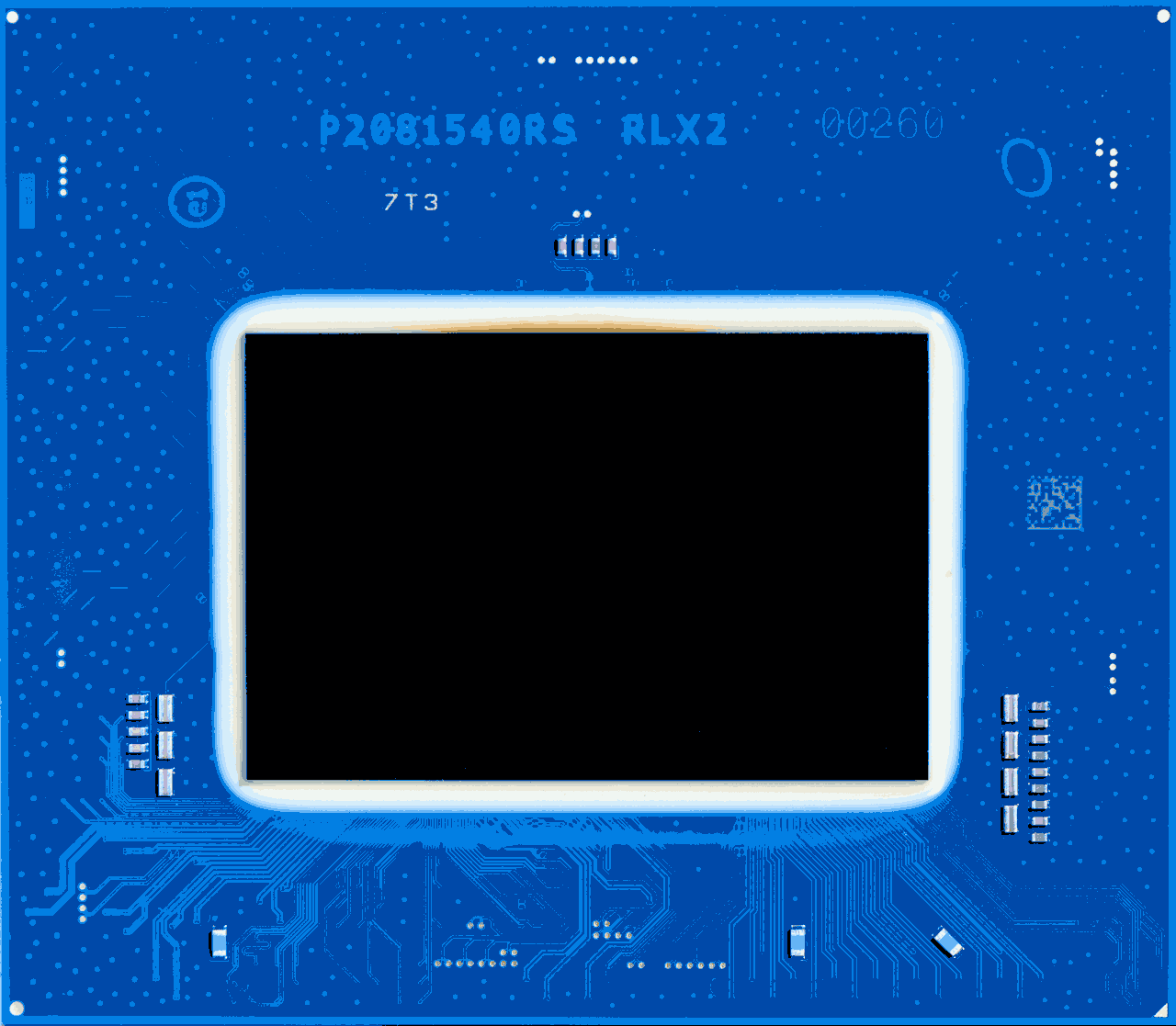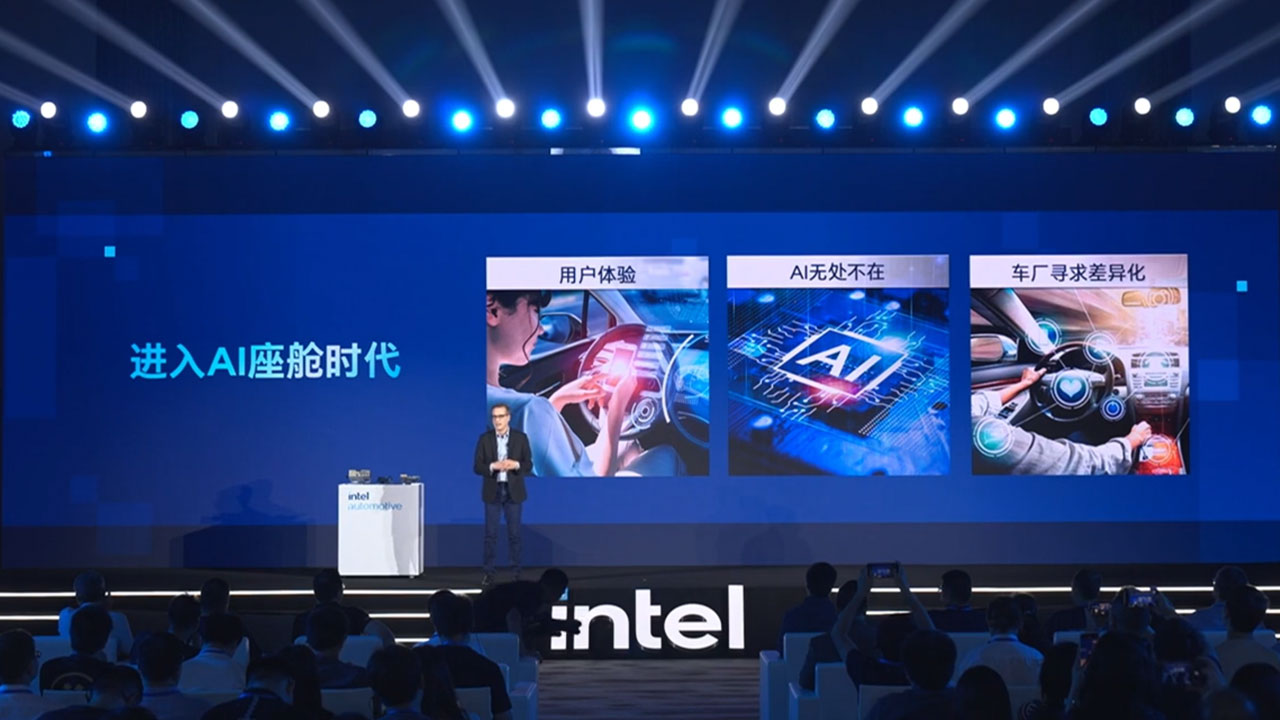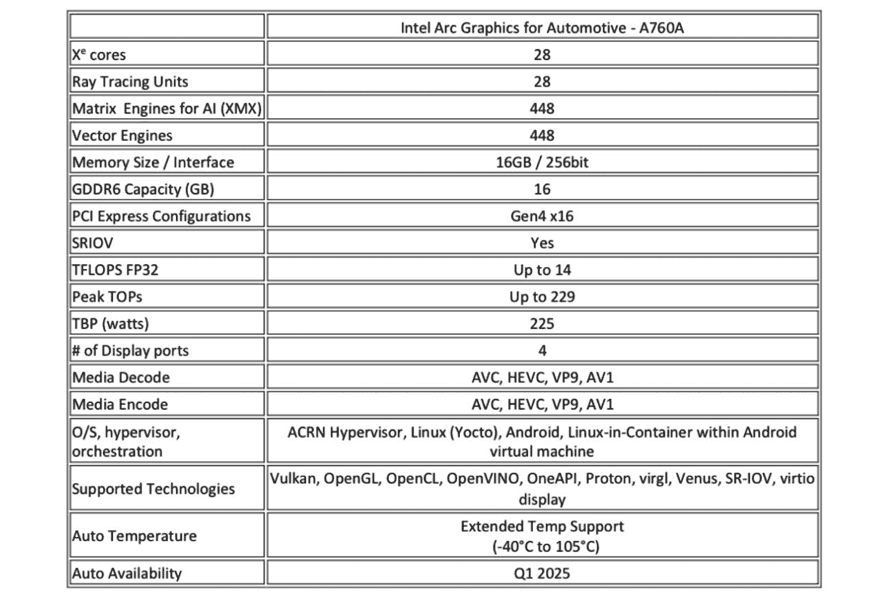
Intel has revealed a powerful new discrete GPU for the automotive industry. Earlier today, the chipmaker showed off the Arc A760A during the Intel AI Cockpit Innovation Experience event in Shenzhen, China. During his on-stage presentation, Jack Weast, VP and GM of Intel Automotive claimed that the new dGPU can run "the same triple-A gaming experience as at home – inside the car." Vehicles with the latest GPU on board will hit the streets as soon as 2025, says Intel.
An email to Tom's Hardware explained that the new A760A was designed to "help OEMs unlock a new era of AI-powered cockpit experiences." Though driver assistance is one of the best-known applications of AI in cars, Intel says that the new discrete GPU will power "personalized in-vehicle passenger experiences much like those experienced across the PC industry." Sophisticated in-car cockpits are of growing importance to fickle car buyers. GPU power is increasingly essential for futuristic, feature-rich, and personalized displays.
Intel is adding the new Arc dGPU to its existing portfolio, including AI-enhanced software-defined vehicle (SDV) system-on-chips (SoCs). Some entry- and mid-tier vehicle trim levels might be OK with the SoC's integrated graphics powering the cockpit. However, higher-end vehicles can offer more premium features with the dGPU, suggests Intel. Even better for automakers and developers, it says that software developed for its iGPU platforms will be "fully compatible" with the A760A.


So, the Arc A760A is going to be suitable for the fanciest of fancy cockpit graphics. Still, Intel's presentation and blog post push further, claiming that this dGPU is ideal for running "high-demand AAA gaming titles" in the car while running AI apps and other automotive and interactive features. That's quite a claim, considering that vehicles may be running up to seven high-resolution screens packed with rich content and processing up to six in-vehicle cameras.

Other experiences afforded by the A760A are said to include unmatched scalability with the dGPU building on the capable existing SoC platform; rich interaction with voice, camera, and gesture inputs; deep and smart personalization with the power to run local LLMs; as well as gaming the system can handle the usual in-car-entertainment needs.
Software support is vital to help hardware like the A760A run to its full potential. Intel says that it has over 100 ISVs working on in-vehicle experiences, and so far, they have created over 500 features and AI apps for automobiles.







